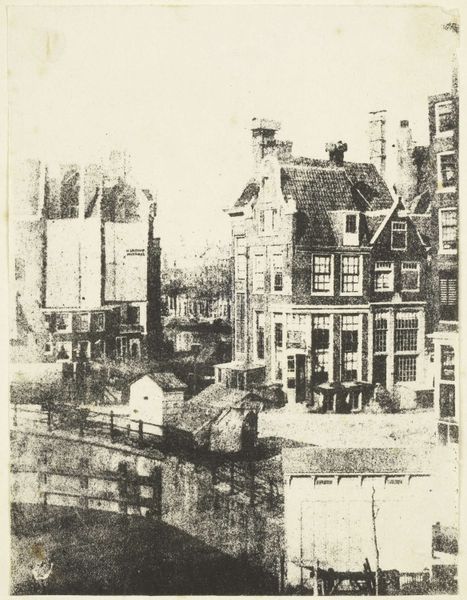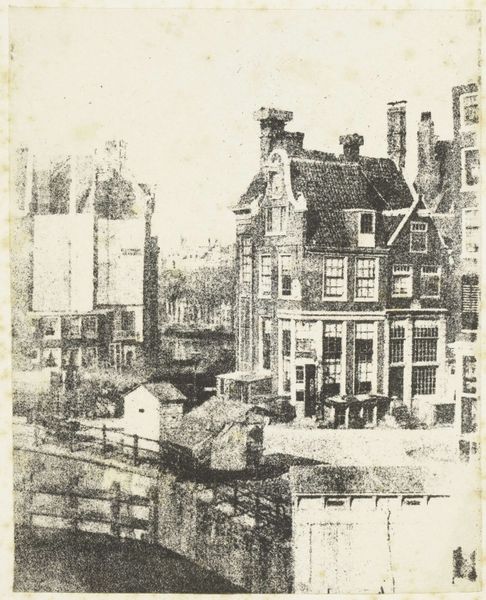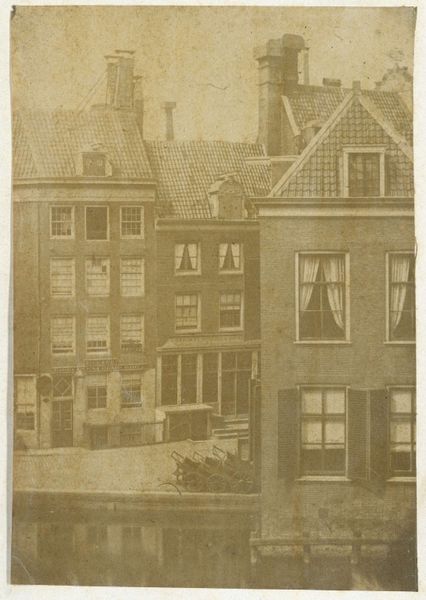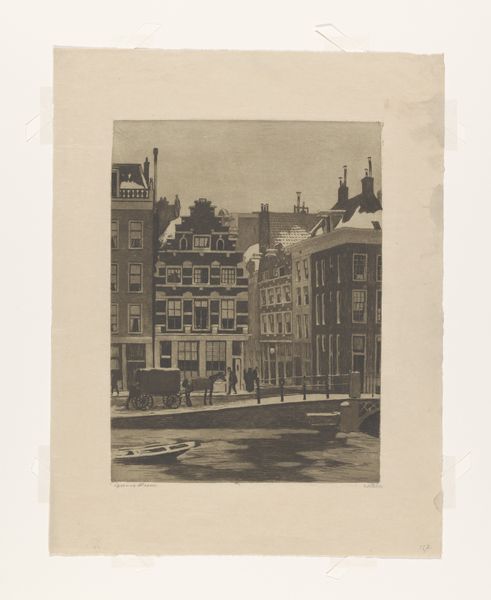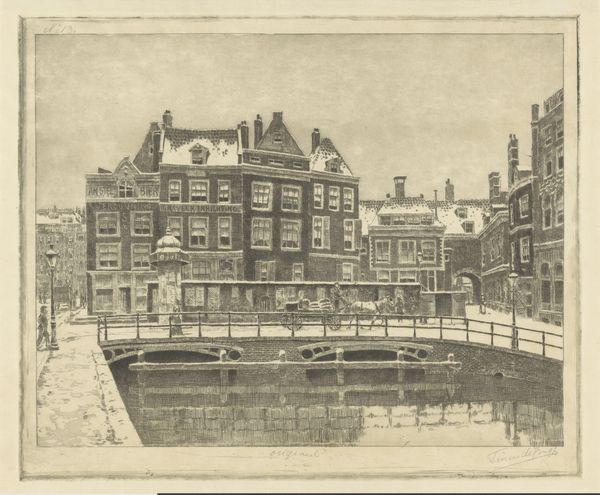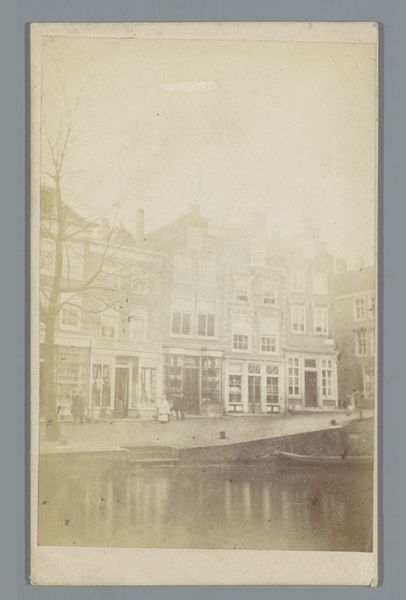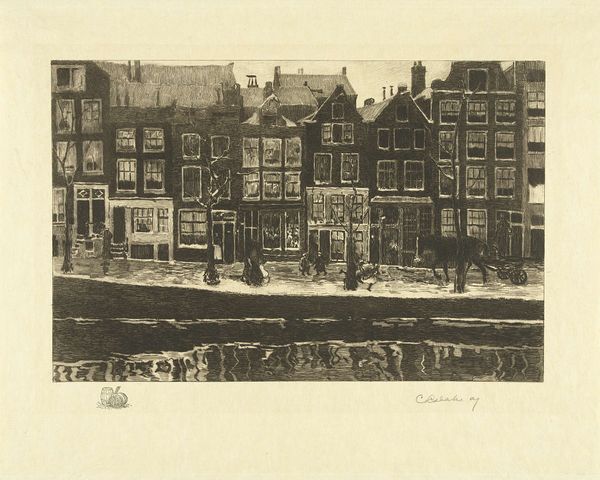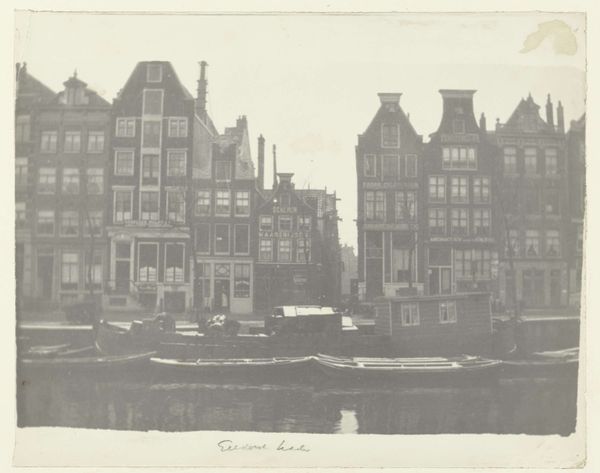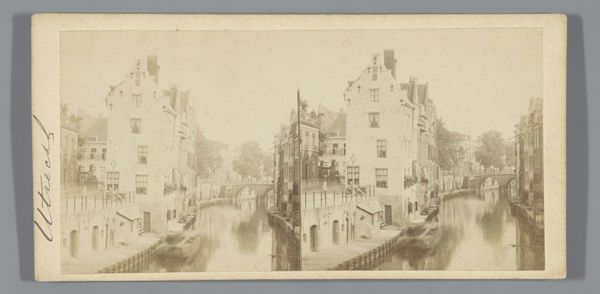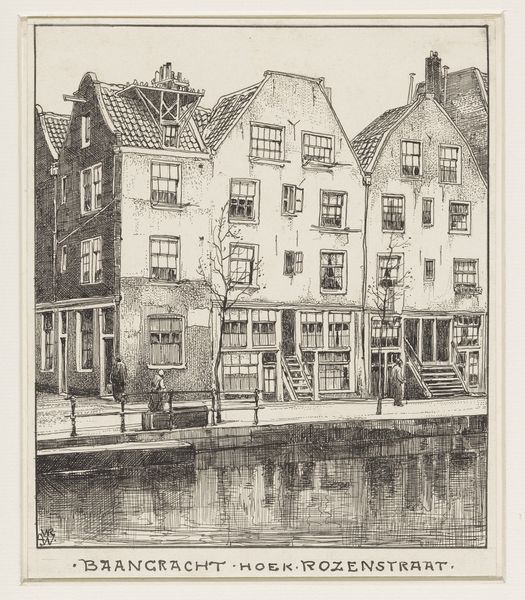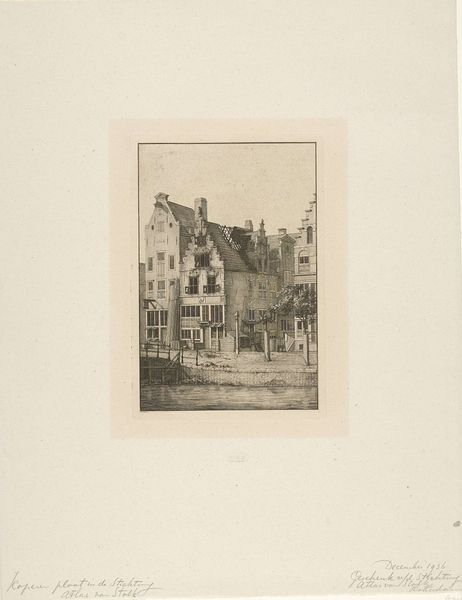
Gezicht vanuit het huis van de fotograaf richting logement Rondeel, Amsterdam c. 1845 - 1846
0:00
0:00
print, photography, albumen-print
#
aged paper
#
homemade paper
#
light colour palette
#
16_19th-century
#
reduced colour palette
#
muted colour palette
#
dutch-golden-age
#
paperlike
# print
#
light coloured
#
sketch book
#
photography
#
folded paper
#
cityscape
#
paper medium
#
albumen-print
#
realism
Dimensions: height 79 mm, width 67 mm
Copyright: Rijks Museum: Open Domain
Curator: This albumen print, captured by Eduard Isaac Asser around 1845 or 1846, offers us "A View From the Photographer's House Towards the Rondeel Inn, Amsterdam." Editor: The light is wonderfully soft; it lends this scene an almost dreamlike quality, obscuring rather than clarifying the lines of the architecture. Curator: Indeed. Asser, a lawyer by trade, was deeply involved in Amsterdam's intellectual circles. His involvement in science and progressive social issues positions this photography as a statement of burgeoning Dutch realism in the context of broader European political upheaval and growing nationalism. The very act of recording daily life takes on a political dimension. Editor: I am compelled by the photographic structure itself. Note the vantage point, slightly elevated, as it provides an interesting foreground-to-background narrative, guiding our gaze along the waterways and emphasizing the geometrical shapes created by the buildings and wharves. The play of light and shadow, faint as it may be, really reinforces this geometry. Curator: It’s also critical to understand what wasn't shown. Asser was an active member of liberal political organizations. His choice of subject and his engagement with photography reflects his personal investment in portraying Amsterdam during this turbulent moment of political transition in the Netherlands. The nascent middle class, increasingly present and influential, sought to establish themselves by representing images of stability while social and economic tensions escalated. Editor: I see what you mean, I can get lost in the image, analyzing tonal modulations. It's the softness of the image which dominates for me. Curator: Well, I see both, because these careful arrangements have to be acknowledged for what they represent within that context. Together, the composition, however dream-like, constructs and reinforces prevailing social perceptions. Editor: Well, after this deep dive I’ll admit the print’s composition seems deceptively simple, with each plane subtly revealing both architectural design and social underpinnings. Curator: Agreed, and with this enhanced understanding, one gains access to the rich texture of 19th-century Dutch culture.
Comments
No comments
Be the first to comment and join the conversation on the ultimate creative platform.
